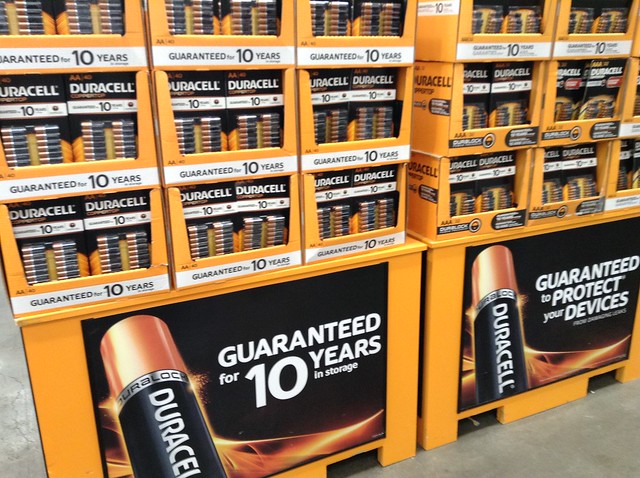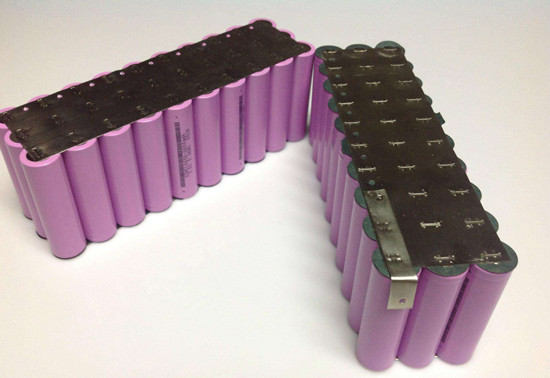Lithium-ion Battery Storage Charge
Oct 12, 2019 Pageview:1487
The perfect storage environment for batteries solely depends on the vital chemicals used in manufacturing the cells. A battery pack begins its lifespan from the first moment of its use once it has been uncovered from its original packaging. This means that during storage, the cells are prone to both discharge and decomposition of their chemical content, which is highly degradable. Over periods, the solvents in the cell’s electrolyte tend to permeate through the sealing, causing the electrolyte to dry up. This results in loss of battery effectiveness and scenarios such as your battery losing charge faster than it used to even when fully charged may occur.
Fixing the battery once corrosion or oxidation has occurred internally may turn out to be impossible, thus forcing you to find a replacement. In most cases, such degrading qualities for cells are accelerated by heat; hence, it is advisable to store cells in a cool and benign condition. In certain battery brands, manufacturers may add different preservatives to optimize their cell performance further, thereby affecting their conduct during storage. As much as lithium batteries may be prevalent in this age, one needs to carefully follow the proper storage guidelines to get the most out of them.
How do Lithium-ion batteries hold a charge?
Their question may appear simple and direct at first, but unless one establishes the basic properties of a lithium battery, it tends to be complicated. There are many different types of batteries, but they all function based on the same underlying principle for charging and discharging. A battery is, therefore, any device that is capable of storing electricity in the form of chemical energy. It then converts this chemical energy into electrical energy, which is used to power appliances and devices. One should note that it is technically impossible to store electricity, but you can save electrical energy in the chemicals within a cell.
There are three primary components of any battery, and they consist of two terminals, the anode and cathode, and the electrolyte separating these terminals. The electrolyte acts as a chemical medium that facilitates the exchange of electrical charge between the cathode and the anode. When a circuit is completed from one terminal to another, there is the presence of an electric current. It takes energy, stored in the cell in the form of chemical energy, to move this current through the circuit.
A current can be termed as moving electrical charges, but what people tend to misinterpret is that these charges cannot be stored in the cell. Unlike capacitors, batteries are incapable of storing charges but rather store chemical energy, which is an inactive form of these charges. The battery is simply a medium, just like a water pump that pumps water, which facilitates the transfer of current to devices.
The energy in a cell is stored in the specific compounds that make up the two terminals, anode and cathode, and the electrolyte. This varies depending on the material used to make these components, for example, SO4, Zinc, and copper.
How do you store lithium-ion batteries?
Lithium-ion cells should be stored in a cool and dry place. During storage periods, it is advisable to keep your battery at a 40% charge state minimum. It is harmful to fully discharge your battery before storage since, during shelf periods, the battery tends to keep discharging itself. This may lead to faster degradation of the cell and in turn a higher rate of decomposition for the chemical contents in them. The ideal temperatures for storing your battery are between 0 to 60F, and this should be done in areas that are free from moisture.
Battery storage state of charge do’s and don’ts.
During storage, batteries degrade over time, even if they may not be in use. It is, therefore, necessary for users to follow the appropriate storage conditions to keep their batteries state of charge in check. This ensures that, however long you may store your battery, you may get the most out of it before its expiry.
Do’s
· When storing batteries, especially the small and coin lithium ones, you must keep them out of children’s reach. This is important as it puts more emphasis on protecting your loved ones before focusing on the battery itself. If children were to swallow these cells, it might cause severe or fatal injuries.
· You suspect your child may have swallowed such cells discussed above, rush them to the ER and carefully but immediately follow these steps:
1.Inform the doctors that it might be a lithium coin battery
2.Refrain the child from eating or drinking anything before an X-ray
3.Provide the identification number for the battery’s package if available
4.Do not induce vomiting
· Store the cells in a cool, dry place at average room temperature.
· Switch off a device and remove the battery when it’s not in use to preserve battery life during storage.
· Keep battery contact surfaces clean by gently wiping with a clean cloth or eraser.
· Preserve batteries in a plastic container/bag.
· When storing batteries together, make sure the terminals are aligned in the same direction.
· Insert the batteries in the right position in any device.
· Carefully read instructions on your device before inserting the specified size and type of batteries.
Don’ts
· Don’t store batteries in hot areas as this can lead to faster degradation.
· Don’t allow little kids to handle batteries.
· Don’t store loose batteries in a pocket or purse around metal objects as this can cause short-circuits.
· Don’t store or mix old and new cells, nor different types of batteries.
· Don’t disassemble or disrupt the natural formation of cells, as this can cause damage.
· Don’t dispose of batteries in the fire; however, much they may have expired or lost its effectiveness as they may explode.
Final thoughts
Lithium-ion batteries are currently the driving force of technology with a vast number of significant applications. To get the most out of your battery pack, you need to understand what a cell is, how it works, and how best you can use it to serve your power needs. Every battery uses the same functionality concept of storage, but the difference comes in when different users use different ways of handling them. Follow the proper guidelines provided in this context in handling your batteries, and you’ll be sure of optimizing the full potential of your cells.
- Prev Article: Lithium-ion Battery Sticker-Types, Usage and Regulation
- Next Article: Lithium Ion Battery Leak-Effect, Solution
Leave Message
Hottest Categories
-
Hottest Industry News
-
Latest Industry News











